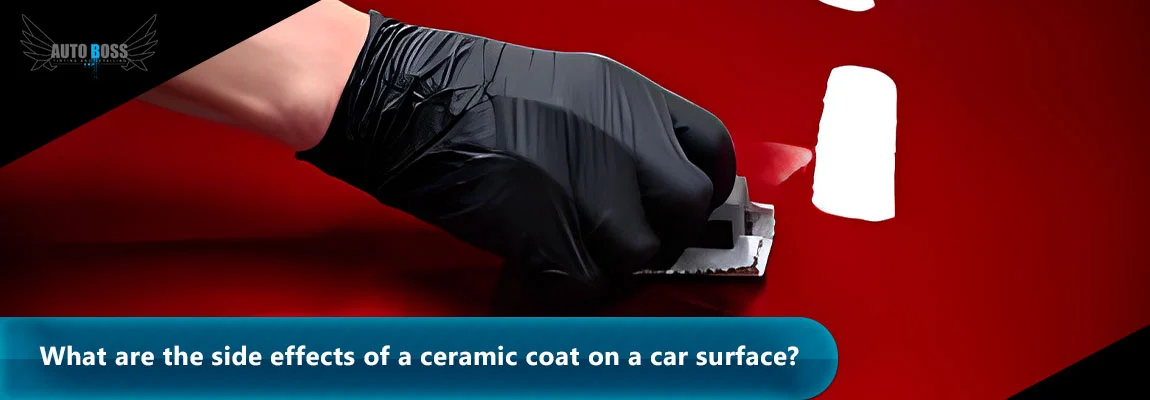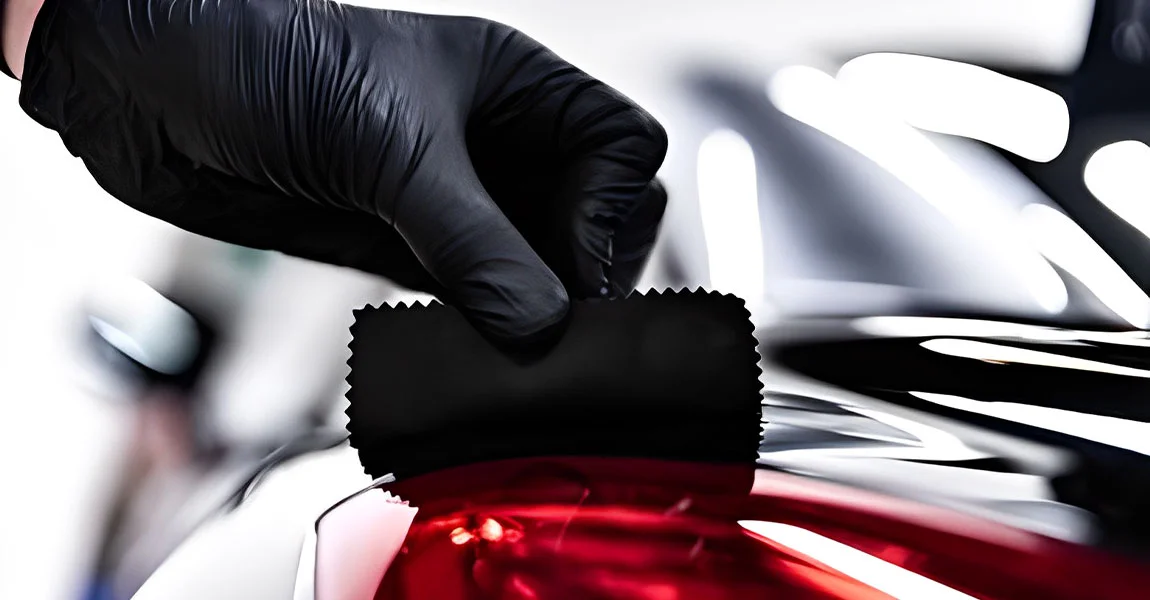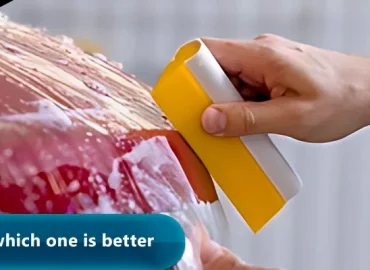Generally, car paint has four layers: Metal, primer coat, base coat, and clear coat. A car’s clear coat gets affected by acidic rain and UV over time, which results in a certain level of corrosion. If the clear coat is scratched, the color layer beneath it can be damaged.
The base color layer fades easily when exposed to acid rain or UV rays for a long time. If you don’t have a ceramic vehicle coat on your car, the paint layer fades a bit. The upper layer of the car paint can be damaged completely.
Side effects of a ceramic coat
Ceramic coat makes a hard, scratch-resistant layer on the car’s clear coat that protects it from the sun or rain. The question arises here: are there any side effects of the ceramic car coat? Some of the common side effects are
Polishing effect
Generally, detailers conduct polishing for smooth and better attachment to the car surface before applying a ceramic coat on it. Polish removes greasy spots from the paint, removing the dirt and iron powder from the clear coat. It can also align an uneven or imperfect layer of clear coat for a better base color coat. Polishing can cause minor damage to the paint surface, ensuring getting the services from professional detailers for this step. Professional detailers like Auto Boss Vaughan professionals minimize the effects of polishing, maximizing the effects of ceramic car coating.
Oxidation
Car Ceramic coating consists of natural substances; that’s why if the coating’s quality is not very good, it will not provide the required protective effects. Moreover, rather than protecting the car surface from oxidation, it can cause oxidation. Our experts suggest you choose an inorganic coating material and focus on its protective effects. You can choose 3M or FCPP products to effectively prevent UV damage.
Ceramic coat can cause windshield wipers to get stuck
If you get a thick ceramic car coat on the windshield to achieve water repellency, it can cause the wipers to get stuck.
Frequent car wash
The most important thing is that a ceramic coated car also needs regular washing. Remember! Contrary to common belief, the ceramic coat is not a magical solution to every problem. The ceramic coating improves car paint’s surface water repellency, making it easier to clean. However, iron and dirt may remain on the car surface along with water droplets, and after getting exposed to the sun, the durability of the coating may decrease.
Don’t remove existing imperfections

Although the ceramic coat is transparent and can prevent the car exterior’s appearance, it doesn’t cover these imperfections. It won’t fix rust, swirl marks, scratches, or anything that exists on the surface of your car. Rather than fixing the imperfections, ceramic car coats preserve them. Remember to fix imperfections before applying a coating to your vehicle.
Not invincible
Although ceramic car coating is damage-resistant and durable from minor scratches and prevents general wear and tear, it is not invincible.
Even after getting your vehicle ceramic coated, it can get damaged by car accidents, runaway shopping carts, and major scratches.
Ceramic coating doesn’t prevent water spots completely
Water spots are actually remnants of salt, mineral or other matter left on the car surface when water evaporates. A ceramic coat doesn’t change this phenomenon.
If the water spot remains on the car surface for more time, it makes it difficult to clean. A larger quantity of water beads down from the coated car after washing reduces the likelihood of water spots. You can wipe away the car surface with a dry cloth.
Similarly, the ceramic coating can minimize the formation of swirl marks but doesn’t give protection completely.
Application
The ceramic car coat application is time-consuming, labor-intensive, and expensive. However, all these cons are far less than the long-term benefits of ceramic vehicle coats.
Hydrophobic quality may decline over time

Hydrophobic quality is the major reason why car owners like ceramic coating to be applied to their cars. However, if you get a low-quality ceramic coating, this quality may not last for long. Depending on the quality and weather conditions, for example, if your area is extremely hot or you may face hailing or stormy rain, the ceramic coating is also of low quality. It will lose its hydrophobic quality over time. Water will not bead down from the car’s surface and leave water marks or stains over it.
However, you can prolong the life of your coating by maintaining it properly and applying waxes or sealants over it.
Think again
After reading this blog you will know what is down side of the ceramic car coat. You can get the benefit of protection from ceramic coating. You can only enjoy the benefits of ceramic coating when it is applied professionally. Ceramic coating installation experts like Auto Boss will provide your car with the finest finishes.
Conclusion
Although ceramic car coats have some disadvantages, the nanotechnology of this coating makes it superior in providing protection against UV damage, scratch resistance, and preventing water spots. It creates chemical bonding with your car paint, so it won’t peel off over time if installed properly. Even if the coating fails, you will not observe it peeling. It simply loses its property to repel water. Depending on the quality of the coating, the ceramic coating can lose its repelling properties over time. If you get a rock chip, it will crack the ceramic coating; it will only create a minor scratch over the surface.
FAQs
What is negative in ceramic vehicle coats?
A ceramic car coat does not remove existing flaws from your car surface. It is neither invincible nor replaceable. It doesn’t prevent water/ swirl marks completely.
Is ceramic coating safe for the vehicle?
Ceramic coats are safe for car paint. When you apply it after proper paint protection, it will improve vehicle shine, block UV rays, and protect car paint for years.
What should you avoid after having a ceramic coat on your car?
Avoid exposing your vehicle to rain or water before the coat is completely cured.






